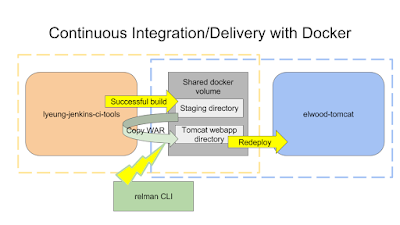Destructuring is a way to concisely bind names to the values inside a data structure. Destructuring allows us to write more concise and readable code.
So, what does this mean?
Suppose we have a vector that contains the bridge officers found in Star Trek original series:
(def star-trek-bridge-officers [ :kirk :spock :sulu :uhura ])
(let [[a b c d ] star-trek-bridge-officers]
println (str a " " b " " c " " d))
;; ":kirk :spock :sulu :uhura"
What happened here was the keyword :kirk is bound to the variable a, :spock to b and so on and so forth.
Suppose we have a slightly different vector, where :sulu and :uhura belongs to another subvector:
(def star-trek-bridge-officers-2 [ :kirk :spock [:sulu :uhura]])
To retrieve the values:
(let [[a b [c d]] star-trek-bridge-officers-2] println (str a " " b " " c " " d))
;; ":kirk :spock :sulu :uhura"
If we're not interested with Spock and Uhura, we replace the variables with underscore character "_":
(let [[a _ [c _]] star-trek-bridge-officers-2]
println (str a " " c))
;; ":kirk :sulu"
Jim, you can't risk your life on theory!
Now, let's talk about destructuring a map.
Suppose we have a map that contains the rank and names of the crew:
(def star-trek-crew { :captain "kirk" :lt-cmd "spock" :lt-1 "sulu" :lt-2 "uhura" })
(let [{a :captain b :lt-cmd c :lt-1 d :lt-2 } star-trek-bridge-officers]
println (str a " " b " " c " " d))
;; "kirk spock sulu uhura"
The variable a is bound to the value of the key :captain and b is bound to the value of the key :lt-cmd.
To complicate the map structure a bit, I'm going to add a few more members as an embedded map:
(def star-trek-officers { :captain "kirk" :lt-cmd "spock" :lt-1 "sulu" :lt-2 "uhura"
:non-bridge-officers {:lt-cmd-1 "scotty" :lt-cmd-2 "mccoy" :nurse "chapel"}})
To retrieve the values including the embedded map:
(let [{a :captain b :lt-cmd c :lt-1 d :lt-2 {x :lt-cmd-1 y :lt-cmd-2 z :nurse}
:non-bridge-officers} star-trek-officers]
println (str a " " b " " c " " d " " x " " y " " z))
;; "kirk spock sulu uhura scotty mccoy chapel"
As you can see, we need to use :non-bridge-officers as the key to refer to the embedded map.
We all have our darker side. We need it; it's half of what we are.
It's not really ugly, it's human.

